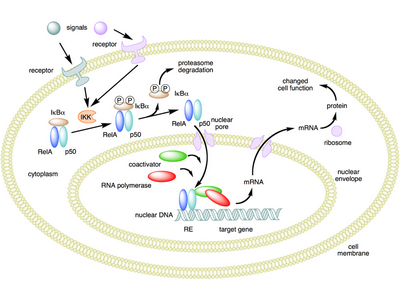|
The Habit Formation
Personality Spectrum Filter; Example - Psychoactives Select the section that interests you. |
|
|
The Habit Formation
Personality Spectrum Filter; Example - Psychoactives Select the section that interests you. |
|
How does the Habit Formation Personality Spectrum Filter impact our ability to freely make choices in the regular unfolding of our lives? Does this filter, and the understanding that our actions may influence "the unfolding" around us, impact the decisions we make once habituated? How strong are our habituations, and how easily can we alter them?The Big Picture
Interestingly, an ability to make "free will" choices (free of habituation or instincts that we may want to (but find ourselves unable to) change) may not be required for survival from an evolutionary selection perspective. It is true that selection for survival requires some flexibility in the making of rational decisions in order to sustain living and reproductive processes. Altering a habituated behavior that has been found to be deleterious can be an advantageous trait required for survival. However, it may not be required all the time to be able to alter a deleterious habituated behavior.
For example, if one perceived that responding to a challenge was clearly important for one's survival, but developed habits or instincts that did not address that challenge most effectively, but did address it nonetheless, survival in those circumstances could be selected for. Especially if habituation and/or craving ensured that the response would occur.
We all have experienced examples of less than ideal responses being "good enough" in our own lives.
Let's define a few terms we will use in this chapter.
Psychoactive substances:For a nice short summary of the addictive (or non) potential of many of the psychoactive substances, [→ click here ←].
- Addictive, such as:
- Non-addictive, such as:
- LSD (Lysergic acid diethylamide) - Note: Like Psilocybin, another seratonergic psychedelic. Also not addictive. However, does interact with most dopaminergic systems as well.
- Psilocybin (psilocybin mushrooms) - Note: Interestingly, while most experiences with this drug are described as pleasant, euphoric, and spiritually positive, this compound does not appear addictive. It impacts 5-HT seratonergic receptors rather than the dopaminergic systems that the addictive compounds do. It does not appear to increase ΔFosB. Most seratonergic psychedelics are not dopaminergic.
While many psychoactive drugs are prescibed and used for various non-cognitive reasons, the substances listed above are also often used as recreational drugs for their mental effects. Several of these also are psychologically and/or physically addictive.
Behavioral addictions involve a compulsion to engage in rewarding non-drug-related behavior. Behaviors known to have addictive potential include:Addiction is a medical condition characterized by compulsive engagement in rewarding stimuli, despite (without regard for) adverse consequences. All addictive engagements, whether they be chemical or behavioral, are:
- Exercise
- Food
- Gambling
- Sexual intercourse
- Shopping
- Use of computers
- Use of the internet
- Use of pornography
- Playing video games
Habit and Habit formation have generally been defined similarly in psychology circles. However, though they may arise and become "automatic" or "habitual" in the same way, habits have often been seen as less clinically severe than addictions. For example, it has been asserted that, "if a person has control over the behavior, then it is a habit."
- reinforcing (i.e., they increase the likelihood that a person will seek repeated exposure to them), and
- intrinsically rewarding (i.e., perceived as being positive or desirable).
ConserveLiberty differs from the view above that the two (e.g. addictions and habits) are different. Rather, ConserveLiberty believes that they are simply manifestations of the same mechanism, applied to differing opportunities for habituation, and differing sensitivities (chemical, biochemical) to habituation as well. Genetic factors (we're all made differently), mechanism factors (we may be more or less sensitive to the different things we might become habituated to), and even environmental factors (e.g. experiences, culture, etc.) are in play, and render our understanding of Habit Formation as "not so simple." Which makes it more fun to consider.
Thus, what might have become a "habit" (defined commonly as something that has become repetitive but that one can readily decide to stop) for one person could become an "addiction" (defined commonly as very, very difficult to decide to stop, if possible at all) for another.
We can clarify the view that they are one and the same with a simple example - cars. Assume you have two cars, and they each have a different maximum speed that they can attain, one higher than the other. In this case, the difference is simply with the engines. The two engines work the same way, they just have slightly different components. The two different "ensembles" thus produces different results.
Keep in mind that Habits may form without sufficient contribution from the Habit Formation Ensemble such that they don't become difficult to break. As a general example, if ΔFosB (see info in The Big Picture below) is not increased by a drug that does not interact substantially with the dopaminergic-driven reward system in the brain, then the habit may be easy to break. Noting a specific example, Psilocybin use (which may have become a habit due to social considerations to fit in, and the enjoyment of its impact) does not interact with the dopaminergic systems much at all, does not lead to increases in ΔFosB, and is relatively easy to quit. Since it is easy to quit it is not considered Addictive (as addiction is conventionally understood.)![[ gauges pictures ]](../addenda/images/kpisintro.png)
ConserveLiberty instead views both Habits and Addictions as simply "differences of degree" occuring (enabled) with the same Habit Formation Ensemble. For some things with some people, we get "weak habits" (easily broken.) For other things, we get "strong habits". For different people, the mixes of things leading to strong and weak habits may be different. For all people, some things leading to strong and weak habits may be the same.
This is how ConserveLiberty views Habit Formation. The Habit Formation Ensemble (or, engine) functions similarly between two people, even though the "ensembles" of the variable parts are different. Thus, one becomes more easily addicted, the other less so. And, depending on the addictive item, it may be that both are equally addicted to some items, perhaps more or less so to others. Because the Habit Formation Ensembles are set differently. Because they are different. And, even slight differences can have a significant impact.
For this reason, ConserveLiberty regards Addiction and Habit Formation as equivalent. Clinically, the intended meaning of the terms may differ only by a matter of degree. However, from ConserveLiberty's perspective, whether it be the formation of addiction to opiates, caffeine, sex, gambling, video gaming, or even stamp or coin collection, we regard all these as Habit Formation, especially when the desire to engage with them becomes compulsive, meaning "irresistibly interesting or exciting; compelling."
There are a number of ways in which individuals may be drawn to form habits (engage in addictive behavior):It is likely in many of these cases that what is being impacted is the Habit Formation Personality Spectrum Ensemble.
- Age - the young are more inquisitive and experiment with more experiences than those who are older. They are curious, more eager to learn. This is also why the young are more easily indoctrinated than those who are older.
- Genetic factors - Epidemiological studies estimate that genetic factors account for 40-60% of the risk factors for a variety of substance abuse addictions. Currently, the data implicating specific genes in the development of drug addiction is mixed for most genes, with a few exceptions that will be discussed below.
- Environmental factors - the whole positive and negative experiences with parents, friends, and others thing (the nurture part of nature/nurture).
- Transgenerational epigenetic inheritance - environmental influences on the genes of a parent can affect the associated traits and behavioral phenotypes of their offspring.
While the ability to rely on habituation (via training, indoctrination, or other influences) may not be necessary in some circumstances, it is also true that the development of a Habit Formation Personality Spectrum Ensemble can also have advantages, and those can have selective advantages in many circumstances. Consider the learned behavioral adaptations (habits) of thousands or millions of species that thrive and survive because of their habits (addictions!).
Is a stronger or weaker Habit Formation Ensemble helpful to enable a more successful embrace of The Truth, and thus fuller experience of Harmony between our lives and the environment around us?
→ The Section above was last updated 11 Dec 2016 14:45 PST ←
How is it that one can portray credibly to another how the Habit Formation Personality Spectrum Ensemble works factually?
Well we can't. Yet. Not enough has been worked out. But what has emerged so far is fascinating!
We need to be able to understand the parts that make up the ensemble. Using our car as an example, in order to understand how the car works, how it actually works, we need to be able to understand its individual components. Those would be the screws, glass, clamps, tires, etc. that make up (together in ensemble) its filters. Those filters (the engine, transmission, steering mechanism, radio, etc.) come together, in ensemble form, to make the car's traits. Those ensembled traits (ability to accelerate, stop, protect one in an accident, hold the road while turning, etc.) come together, again in ensembled form, to make the car.
Figure 1: Mechanism of NF-κB action.A number of individual biological components are being uncovered that appear to be relevant somehow to the neurophysiological mechanism that results in "addicted" behaviors (compulsive engagement, whether or not there are near or long term adverse consequences.) These processes appear to be in common regardless whether the addiction is to:

In this figure, the NF-κB heterodimer between Rel and p50 proteins
is used as an example. While in an inactivated state, NF-κB is located
in the cytosol complexed with the inhibitory protein IκBα. Through
the intermediacy of integral membrane receptors, a variety of
extracellular signals can activate the enzyme IκB kinase (IKK). IKK,
in turn, phosphorylates the IκBα protein, which results in ubiquitination,
dissociation of IκBα from NF-κB, and eventual degradation of IκBα by
the proteosome. The activated NF-κB is then translocated into the
nucleus where it binds to specific sequences of DNA called response
elements (RE). The DNA/NF-κB complex then recruits other proteins
such as coactivators and RNA polymerase, which transcribe
downstream DNA into mRNA, which, in turn, is translated into protein,
which results in a change of cell function. (more info)For example, check out some of the following:
- Chemicals
- opiates, pain killers, alcohol, caffeine, etc.
- food addictions (often regarded as a behavioral addiction (below) but included here because food is and interacts with the body as a chemical.
- Behaviors
- sex, exercise, gambling, shopping, gaming, etc.
- Mechanisms of addiction formation. From Wikipedia, Addiction"
- Transcriptional and Epigenetic Mechanisms of Addiction. Nature Reviews Neuroscience 12, 623-637 (November 2011)
- Cellular basis of memory for addiction. Dialogues Clin Neurosci. 2013 Dec; 15(4): 431-443.
- Transcriptional and Epigenetic Substrates of Methamphetamine Addiction and Withdrawal: Evidence from a Long-Access Self-Administration Model in the Rat. Mol Neurobiol. 2015; 51(2): 696-717.
Signal Transduction that occurs in nucleus accumbensThe general model that has emerged to date is as follows:
D1-type medium spiny neurons that gives rise to
psychostimulant addiction.

This diagram depicts the signaling events in the brain's reward center
that are induced by chronic high-dose exposure to psychostimulants that
increase the concentration of synaptic dopamine, like amphetamine,
methamphetamine, and phenethylamine. Following presynaptic dopamine
and glutamate co-release by such psychostimulants, postsynaptic
receptors for these neurotransmitters trigger internal signaling events
through a cAMP pathway and calcium-dependent pathway that ultimately
result in increased CREB phosphorylation. Phosphorylated CREB
increases levels of ΔFosB, which in turn represses the c-Fos gene with the
help of corepressors; c-Fos repression acts as a molecular switch that
enables the accumulation of ΔFosB in the neuron. A highly stable
(phosphorylated) form of ΔFosB, one that persists in neurons for one or
two months, slowly accumulates following repeated high-dose exposure
to stimulants through this process. ΔFosB functions as "one of the master
control proteins" that produces addiction-related structural changes in the
brain, and upon sufficient accumulation, with the help of its downstream
targets (e.g., nuclear factor kappa B (NF-κB)), it induces an addictive state.Understanding the mechanism of addiction relies on more than simply understanding various of the chemical transformations and gene induction and repression events that occur. Where these are happening in the brain are also very important, since the various structural areas correlate with the functions they are responsible for.
- Following presynaptic dopamine and glutamate co-release by psychostimulants (e.g. amphetamine, methamphetamine) postsynaptic receptors for these neurotransmitters trigger internal signaling events through a cAMP pathway and calcium-dependent pathway that ultimately result in increased CREB phosphorylation)
- Psychostimulants increase cAMP levels in striatum, which activates protein kinase A (PKA) and leads to phosphorylation of CREB (the cAMP response element binding protein). CREB phosphorylation induces its association with CBP (the CREB binding protein, a histone acetyltransferase). CBP then acetylates histones, facilitating gene activation. This is known to occur on many genes including fosB and c-fos in response to psychostimulant exposure. ΔFosB is also upregulated by chronic psychostimulant treatments, and is known to activate certain genes (e.g., cdk5) and repress others (e.g., c-fos) where it recruits HDAC1 (histone deacetylase 1) as a corepressor. ... Chronic exposure to psychostimulants increases glutamatergic [signaling] from the prefrontal cortex to the NAc. Glutamatergic signaling elevates Ca2+ levels in NAc postsynaptic elements where it activates CaMK (calcium/calmodulin protein kinases) signaling, which, in addition to phosphorylating CREB, also phosphorylates HDAC5.
- Phosphorylated CREB increases levels of ΔFosB, which in turn represses the c-Fos gene with the help of corepressors
- c-Fos repression acts as a molecular switch that enables the accumulation of ΔFosB in the neuron.
- ΔFosB functions as "one of the master control proteins" that produces addiction-related structural changes in the brain, and upon sufficient accumulation, with the help of its downstream targets (e.g., nuclear factor kappa B), it induces an addictive state.
- Repeating, the most important transcription factors leading to the the alterations creating the addicted state are ΔFosB, CREB (cAMP response element binding protein) and NF-κB (nuclear factor kappa B).
- Importantly, ΔJunD (a transcription factor) and G9a (histone methyltransferase) directly oppose ΔFosB's expression and function.
The reward system of the brain is characterized by the interaction of several areas. Networks of dopaminergic neurons with co-localized postsynaptic glutamate receptors (AMPAR and NMDAR) are involved. Virtually all drugs causing drug addiction increase the dopamine release in these pathways.
In addition, Reward Sensitization occur and Cue-induced cravings increase following chronically high levels of exposure to the addicting stimuli.
It is likely that additional biological components, either individually or acting in ensemble with each other will be uncovered as we better understand the biological basis serving as a foundation for the development of addicted behaviors, and the Habit Formation Personality Spectrum Ensemble. How will we eventually be able to determine which are relevant and which are not?
While the Habit Formation Personality Spectrum Ensemble cannot be described accurately for each of us, those with weaker Habit Formation Filters can get closer to recognizing and participating in a productive relationship with All That Is, as it unfolds than those with stronger Habit Formation Personality Spectrum Ensemble filters.
What insights can be communicated regarding the truthful recognition of and integrated relationship with All That Is?
→ The Big Picture section above was last updated 05 Dec 2016 17:15 PST ←
 Consider thoughtfully.
Consider thoughtfully.